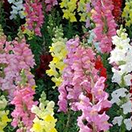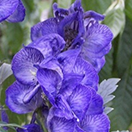A month-by-month guide to Beekeeping
Keeping your bees healthy and happy will make sure you get the best out of your hives all year round.
Our expert beekeepers have put together a month-by-month guide to keep you on track through each season, we also recommend reading Ian Douglas’s article about Autumn Beekeeping.


January
If fondant is on the hives, check to see if it needs to be replenished.
Use the monitoring board to check the average daily Varroa drop over a week and treat if the count is above 2.5 mites a day.
February
Keep monitoring for Varroa, treat with icing sugar if necessary or safe chemicals such as Hive Clean. Some beekeepers use Apiguard but it is not as effective in the cold.
Check that you have sufficient supers, frames, foundation etc. for the coming season and clean your spare equipment.

March
The queen will be laying in ever-greater numbers now and the brood nest will be growing in size. On a warm day, you can open the Hive for a quick check to see if the colony is Queen-right.
Keep the mouse guard on. Add supers on stronger colonies towards the end of the month if there is a nectar flow and to relieve any overcrowding.
April
Add drawn supers if possible to overwintered colonies.
Check colonies for stores in brood nest.
Remove mouse guards.

May
Check for queen cells to avoid swarming – further information about the Pagden Swarm Method can be found in the attached document.
Inspections can be every ten days with a clipped Queen.
June
Keep carrying out swarm control. Add more supers if required.
Keep checking on the health of your bees. Check they have enough food, and if you are very lucky, harvest some spring honey!

July
Check levels of Varroa in drone brood with uncapping fork and dust with icing sugar at each inspection. Consider using sacrificial drone method to monitor / control Varroa.
August
Extract and store honey in containers with traceability details – i.e. date, place and colony – put supers back on colony for the bees to clean.
Use Apiguard (or similar) as soon as you’ve taken your honey off the hive.

September
Check weight of hive to ensure enough stores – feed if necessary. Feeding should be completed before the cold puts the bees into their winter cluster.
October
Feed the Bees if they do not have enough stores. They will need about 18 – 22 kg of honey per hive to safely last through the winter. Larger hives headed by prolific queens may require more. A British Standard National brood frame, when full of honey, contains about 2.2 kg. A full 14″x12″ is just over 3 kg.
Ensure the hive is ventilated (eg with matchsticks.) Remove Queen Excluder for the winter to prevent Queen being separated from the cluster.

November
Ensure mouse guards are fitted on the entrance to hive. Use winter time to clean/repair equipment in preparation for the next year!
December
If any time of the year is supposed to be broodless this is it. You can take advantage of this by using Oxalic acid treatments to knock down the Varroa. Consult a few seasoned beekeepers for details of the techniques that they use.
